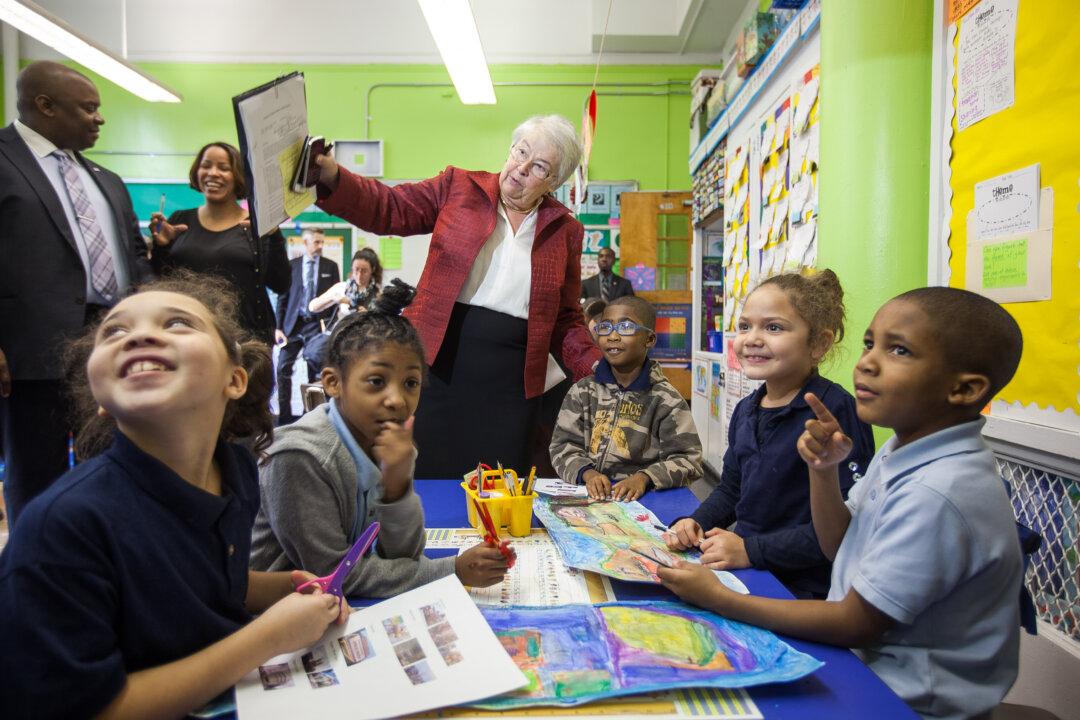NEW YORK—Some of the city’s most struggling schools just got more help. Many of them were paired with non-profits that should help them solve their problems. And the city is covering the bill—$52 million for 4 years at 45 schools.
The solution is called “community school,” but each program may differ greatly. What should be common are a focus on attendance, social and emotional wellbeing, and health services, according to Schools Chancellor Carmen Fariña.
Fariña visited one of the schools on Monday—P.S. 15 Roberto Clemente on the Lower East Side.
P.S. 15 is one of 300 city schools on the state list of struggling schools, largely because of its abysmal results on state standardized tests. It has barely 200 students in its elementary grades, but more than one in five was chronically absent last year.
Of the 45 schools to get the help, 11 are on the state list of struggling schools and about 20 have a serious attendance problem with 30–50 percent of students chronically absent.
Fariña said the partnerships should zero in on the causes.





